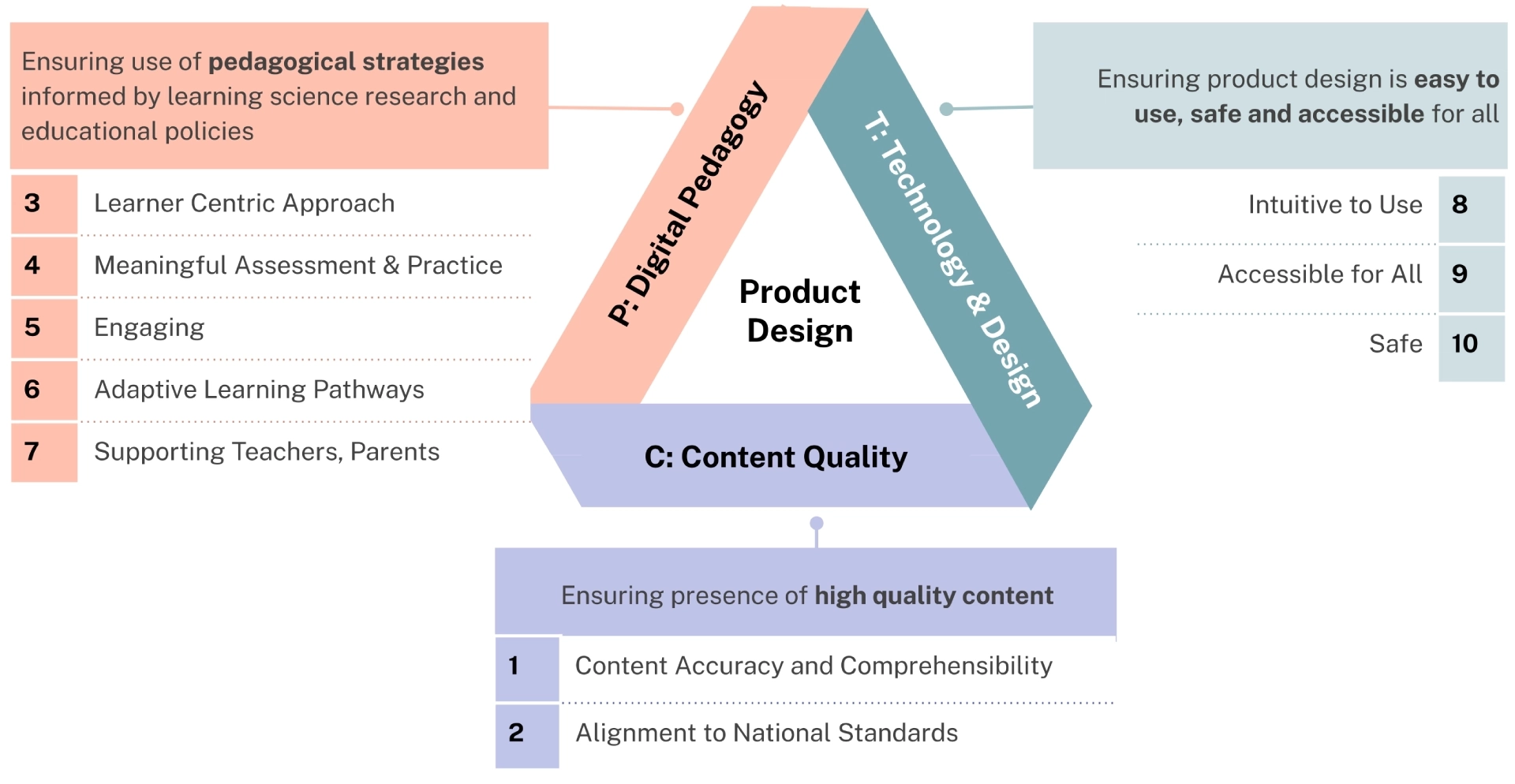Tulna 2.0
Tulna 2.0 builds on the original Tulna framework, raising the bar for what ‘good EdTech’ means. It retains its three core dimensions (Content Quality, Digital Pedagogy, and Technology & Design), while adding new criteria shaped by current policies and research. Evaluations are now organised into 10 distinct clusters, with complex criteria distilled into 2-3 objective indicators making reports easier to interpret and evaluations more consistent and reliable.
View original Tulna 1.0 standards - here.


Standards 2.0
Overview of the updated standards, with new clusters, criteria, granular indicators, and objective checkpoints.

Objectives & Approach
Systematic, evidence-based approach integrating academic research, policy insights, and stakeholder inputs.

Evaluation Suite
Resources that operationalise the standards, ensuring consistency and objectivity in every evaluation.

4-Page overview
Brief four-page overview of Tulna’s approach, solution, impact, and tailored offerings.
Content Accuracy and Comprehensibility
Focuses on the correctness, clarity, and comprehensibility of learning content and assessments to ensure foundational knowledge is delivered effectively and enables learner understanding
Correctness and Clarity in Content
Is the learning content factually correct and clear?
Factual Accuracy
Clarity
Correctness and Clarity in Assessment
Are the practice questions, activities, assessments, and their feedbacks/solutions factually correct and clear?
Factual Accuracy
Clarity
Language Comprehensibility
Is the language appropriate for intended learners with age-appropriate vocabulary, easy to follow accent and good audio quality?
Grade appropriate Vocabulary
Simple Text Structure and Clear Handwriting
Easy to Follow Voice
Content Complexity
for language products
Is the learning unit of appropriate complexity for the intended learner?
Complexity in Layout, Ideas and Meaning
Variety in Content Type
for language products
Is the variety in teaching learning material appropriate and relevant to the grade range?
Variety in Content Type
Alignment to National Standards
Ensures the educational content, pedagogy, and technological integration are designed to meet curriculum objectives as outlined in national standards
Curriculum Alignment
Is the learning content aligned to the target curriculum and recommended skills in national standards like NEP 2020, NCF 2023, with adequate comprehensiveness and depth?
Topic and Curriculum Goal Alignment
Competencies/LO Level Alignment
Inclusive Representation
Does the product content avoid traditional stereotypes and include representation of diverse characters, examples, and scenarios?
Avoidance of Stereotypes
Representation of Diversity
Bilingual Use
for vernacular products
Does the product include use of English to introduce learners to English technical terms while imparting instructions in vernacular?
Technical Terms in English (Voiceover)
Technical Terms in English (Visuals)
Content and Pedagogy Alignment
Are the pedagogical strategies used in the product aligned with national standards?
Appropriate Pedagogical Strategies


